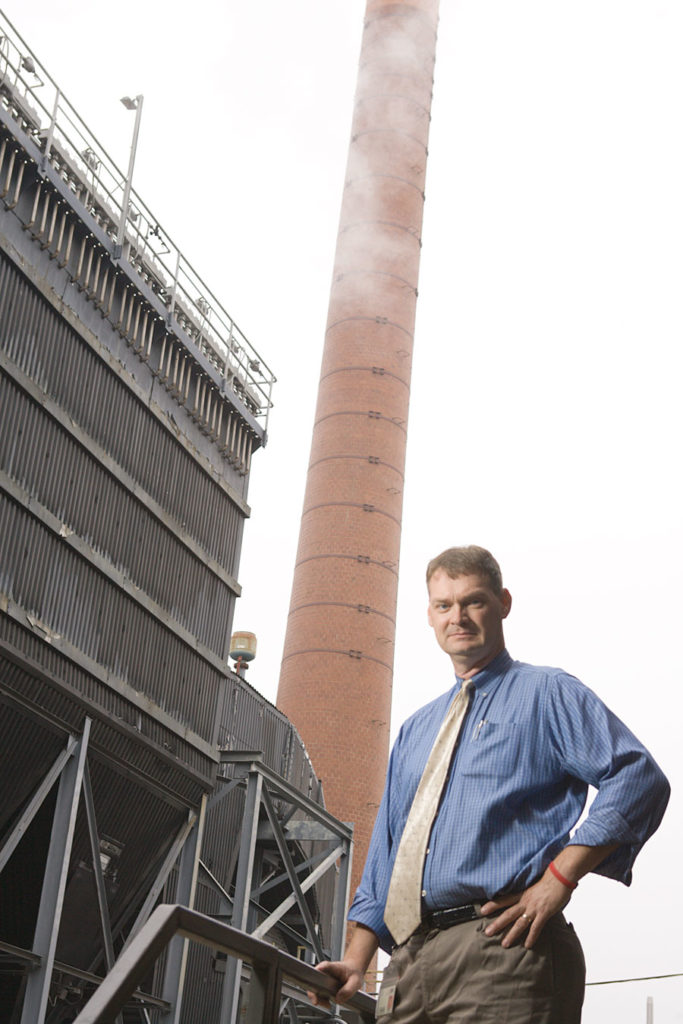A three-year effort to conserve energy on the Athens campus is beginning to pay off.
As a result of engineering actions taken over the past decade, the university has seen a steadily downward trend in energy use per square foot. In 2006, in response to skyrocketing utility costs-a factor the university cannot control-the Energy Conservation Executive Committee studied UGA’s energy use and issued recommendations on how to further conserve.
The committee had six major recommendations: 1) develop a communication and education program; 2) conduct audits on campus buildings to eliminate energy waste; 3) install meters and other devices to monitor and control utility usage in campus buildings; 4) conduct an economic feasibility study for burning a combination of wood biomass and coal in the university’s steam plant; 5) consider the purchase of hybrid vehicles, including buses, and vehicles that use renewable fuels; and 6) install energy-saving devices.
As UGA observes Energy Conservation Month in October, here’s an overview of some of the campus’ efforts over the past three years.
The Physical Plant Division launched the “Go Green” Web site at http://gogreen.uga.edu/ in 2007. The site has information about green cleaning, recycling, conserving water and saving energy.
In the past three years, 15 building energy audits have been performed. Each year five buildings are audited with more audits planned for the future. The audits focus on facilities that have the greatest opportunities for savings. Some audits have revealed energy-saving solutions that have been implemented campus-wide. At the main library, the audit found uninsulated steam valves. Insulating blankets were installed around the valves at the library and across campus-saving an estimated $43,000 a year.
For almost 10 years, the Physical Plant has been capturing electrical and water utility usage information in a database so engineers can analyze the usage and identify problems quickly. Steam meters are being installed on all campus buildings that use steam.
An independent study was performed to assess potential replacement technologies for the coal-fired boiler at the steam plant. The Physical Plant is reviewing these options, including biomass, for the eventual replacement of this boiler when its useful service life ends over the next five to 10 years.
The university has approximately 10 electric vehicles, including maintenance carts for the Physical Plant. The fleet includes flexible-fuel vehicles that can run on alternative fuels, including biofuels. Campus Transit has experimented with B-20 fuels but the fuels caused mechanical problems for the existing buses. Hybrid buses are currently cost-prohibitive.
The university has installed energy-saving devices including motion sensors to turn off lights when not in use; exit signs with energy-conserving LED lights and more efficient fluorescent lighting.
Ken Crowe, director of energy services, said that some of the biggest reductions in energy use come from improved controls on lighting, heating and cooling.
“It’s really amazing. We added more than 250,000 square feet to campus, and yet the energy bill for August is less than it was a year ago,” said Crowe. “All of these things working together-the new equipment, the audits, people being aware-have really made a difference.”
